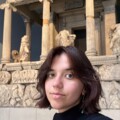Romuald Hazoumè: A Journey into the Art and Culture of Benin
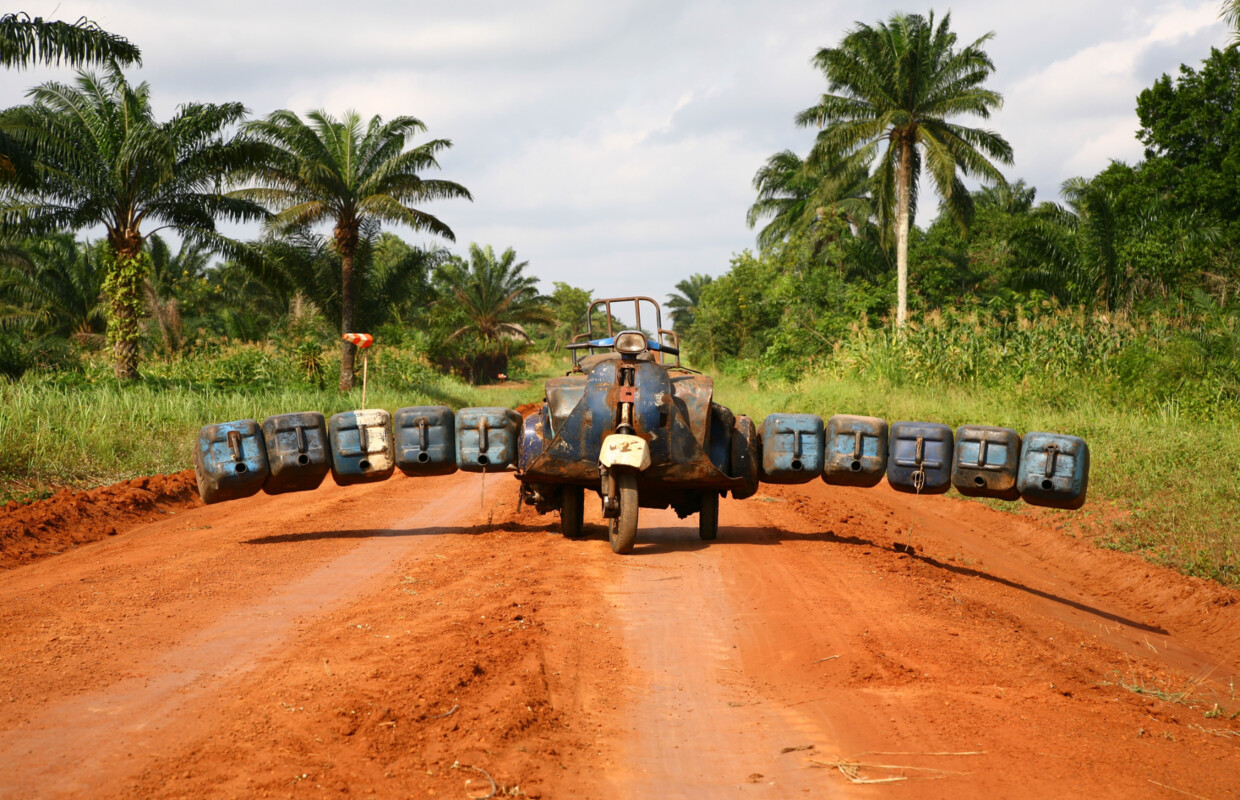
Art has the extraordinary power to transcend borders and speak to the core of human experience. In a world where cultures are increasingly interconnected yet often misunderstood, art serves as a bridge, connecting diverse histories, traditions, and perspectives. In this context, the work of Romuald Hazoumè stands out as a vivid and compelling voice in the art scene, enduring the spirit of African culture and its relevance in our contemporary global society.
Born in Porto-Novo, Benin, Hazoumè’s early life was marked by a passion for creation. He channeled his energies into art, using simple and traditional objects to explore themes of identity, spirituality, and the legacy of colonialism. His pieces are not merely artworks; they are profound commentaries on the human condition, reflecting on the social, political, and spiritual dimensions of life in post-colonial Africa. Through his work, Hazoumè delves into the rich symbolism of Voodoo and the spiritual significance of the Orishas, offering a nuanced perspective on these cultural and religious practices.
In this interview, the artist shares his insights into the creative processes behind his most notable works, the cultural symbols embedded within them, and the personal and societal narratives they convey. Join us as we explore the intricate layers of meaning in Hazoumè’s art, gaining a deeper understanding of his vision and the powerful messages that drive his creations.

G: How did you first become interested in art?
RH: I started so long ago… as a child. I didn’t think I would be an artist one day, my first Idea was to become a doctor. But the road wasn’t that, the road was to become somebody who would try to make something with his hands. At first, it gave me a lot of problems, especially at school. Later a teacher bought me oil paints to make art. The system was very good when I was in high school, because at that time you could study but you could also practice. You learned how to make theatre, how to make art or how to make music, and I just made art myself. And it's where I learned a lot of things, in France. Then, a few years later, I made my first exhibitions, and one day I met Mr. André Magnin, he is the person who created the Contemporary African Art Collection (C.A.A.C.), this collection is the most important collection in the world [featuring] African art, which belongs also to Jean Pigozzi, a french guy with an Italian name who lives everywhere! We made the first exhibition in Saatchi Gallery, in London, it was the first big exhibition. After that, I started my career everywhere with several exhibitions.
G: Your work often combines traditional techniques with contemporary themes. What draws you to this juxtaposition, and how does it enhance your message?
RH: You see, sometimes the most important thing for an artist, is to call only his name. And to understand what he's doing is good, you know, because, for example, if there is a piece of art from Van Gogh, everybody recognizes it. But I think that it’s is very bad when somebody calls another name before calling their own names, you know? Like a guy from Côte d’Ivoire. He is a painter who makes his works similarly to Basquiat. And many people said that he is the new Basquiat. But for me, that is very bad. It means you are doing the same work as another artist. But I'm sure it's not the same thing. That's why people see him as a new Basquiat. But I don't want people to say to me, or the guy that “You are the new Basquiat”, no, you are you. Many people, when they just look at your work, will think about the collection of Basquiat, they will not find that it is yours.
It is just one example, and for me what is very important, is that the artists find a way to be inside the group and the whole artists scene, they need to find a very special way to talk.
I combined a traditional way with what we can call the global way, I just bring the traditional way inside my work because that's what I know better and I take out many things people could not understand and I let them live, let them dream, let them think, you know, and that's good. That's why many people think I’m an African contemporary artist, and I’ve never said I’m not, I assume I’m an African contemporary artist, because we all are from somewhere, but the problem is why when there’s something we know better, we want to close the door to hide it?
G: You often use gasoline canisters in your works, what is the reason behind this shape?
RH: Have you ever had the chance to come to Benin?
G: Unfortunately not.
RH: If you come to Benin, in West Africa, and you come especially to cities like Porto-Novo, where I was born, you will truly understand why I use jerrycans, and why ‘jerrycan’ means ‘somebody’.
Nigeria produces petrol, but this petrol is not refined in Nigeria. They take it outside Nigeria to make a refinery and then, they bring it back, which is very stupid. But, when the petrol comes back, Nigerian people sell the petrol so cheaply, because the government put some kind of money on it to pay half of this petrol.
Then, people who buy petrol from Nigeria, cross the border and sell it to Benin people. They sell it to Togolese, they sell it to Niger people, they sell it to anybody they can find.
So the petrol we use in Benin is not good petrol, is not good quality, but it's half-price-cheap. And to carry this petrol everybody uses these jerrycans, if you are in Porto-Novo, in every street, in every road, in every house you will find a jerrycan like that, you know, the black one, because the people bring petrol and sell it inside these canisters and make everything with jerrycans.
There are many many many people who make this business, but, for example, if I make this business, I make a mark on my jerrycan or a painting on it to recognize my canister, and that painting means a lot, it means our history.
You know, if you are Catholic, sometimes you put the cross in your house or somewhere to get protection. If you are Changó, our religion, our voodoo religion, you’ll put white and red colors, because the color is the ID of the religion, we can see the religion identity. They put it on the jerrycan to mark it, but the color is not like in Italy: there, if you want to make a painting you just bought color and you use it, okay? Here in Africa at the beginning we never buy paint like that. We use the colors for our Voodoo, for our Orishas, and everybody knows in our family, the good colors for us are white and blue. Because our God, our Voodoo is mommy water, the God of water. And our God uses a white and blue fabric. And it is not possible to find blue and white paint, so we use fabrics, white and blue to show the colors. The blue one, precisely indigo, is printed in our head and we know that the protection we need to have is in these white and blue colors. Some other people use red or yellow. But the red is not paint, it is blood, the yellow is not true yellow, it is flour, made from palm trees.
So, every color we use, we put it on our jerrycans to have more protection. The color is our identity.

That's why you see a color on every jerrycan, those that don’t have a color belongs to somebody who has no religion, somebody who doesn't care about that, or somebody who is not in danger you know, because when you carry petrol you could be burnt in five or ten minutes, you know, you can disappear. Because the people carry this petrol with motorcycles, and they carry about 520 liters, so a person can be burned in five minutes on the road, they can die so quickly.
And that's why we have gasoline canisters everywhere, the jerrycan belongs to someone. And when I make a piece of art, the jerrycan can be a metaphor to represent somebody, a metaphor for indicating people, people with different kinds of colors, different kinds of marks, different kinds of forms.

G: When did you first find out that your works would be participating in the Venice Biennale? How was it to get such news?
RH: I was very angry, because I knew it six months before. We had no time, we needed to work every day and we had to think about what we were doing first.
It took us minimum one month to think about the way to go, what to do, and after that I worked five months, every day and night.
It makes me so angry because of the government people who organized this Biennale - it is something very political you know, it's not the curator who decides, it's just the government that decides to make a pavilion, because somebody needs to pay. And the government also finds the artists who need to participate - and they knew two years before there would be a Benin pavilion. But they just talked to us 6 months before the opening.
There is no respect for the artists, and no respect for the art work. We needed more time. It made many people crazy and sick.
G: It must have been very demanding! Especially since the spaces in the Venice Arsenale are not very large.
RH: Exactly! We had to travel there to check the places, to think about how to fit our work and after that, when we made all the pieces, we had to send every [piece] from Benin to Venice, which is not easy. And we had to think about everything in only six months, so I was not very happy. It was a big challenge because normally to make a project like that I need minimum one year.
Furthermore, I needed to find many people who would collect the jerrycans for me because I had no time anymore. If I had time I’d spend for example not 100 but 50, if I had time I would not spend a lot of money like that, you know.
It made me so angry because you know the situation in Africa is so difficult for many people, and if I can spend not too much money I'm happier.
G: Did any lucky accidents or unexpected events influence your creative process?
RH: When I started to put all the jerrycans together, I had to use a drill to make a small hole on the top. When we were on the stage, I just looked at the top and I found that when I made these small holes, they could be stars!
If you go back inside the piece, just look up, you will see stars. I never thought about that before that moment. It was very accidental, something I didn't expect, you know. I saw it and I said “that is the sky” and I let it like that.
And that sky means we have our ancestors who look at us, like the stars, the stars protect us.
Because the pieces I made are only for human beings, and the human being is a lady. Because without women we would not exist, you know. For me women are so important, and in my piece women are on top, but what do women mean? They mean me, mean sons, mean husbands, because we all come from a woman. And the work talks about humanity, not about missions, not about artificial intelligence, not about ministers – they don't care about you. Inside the work, you just need to get power, you have to think about something you want to have, and when you go outside you will become a powerful woman or a powerful, man because you are strong only inside of my work, because everybody is watching you, the jerrycans, they are all powerful people watching and giving you the power. And when you are outside you become somebody with power.
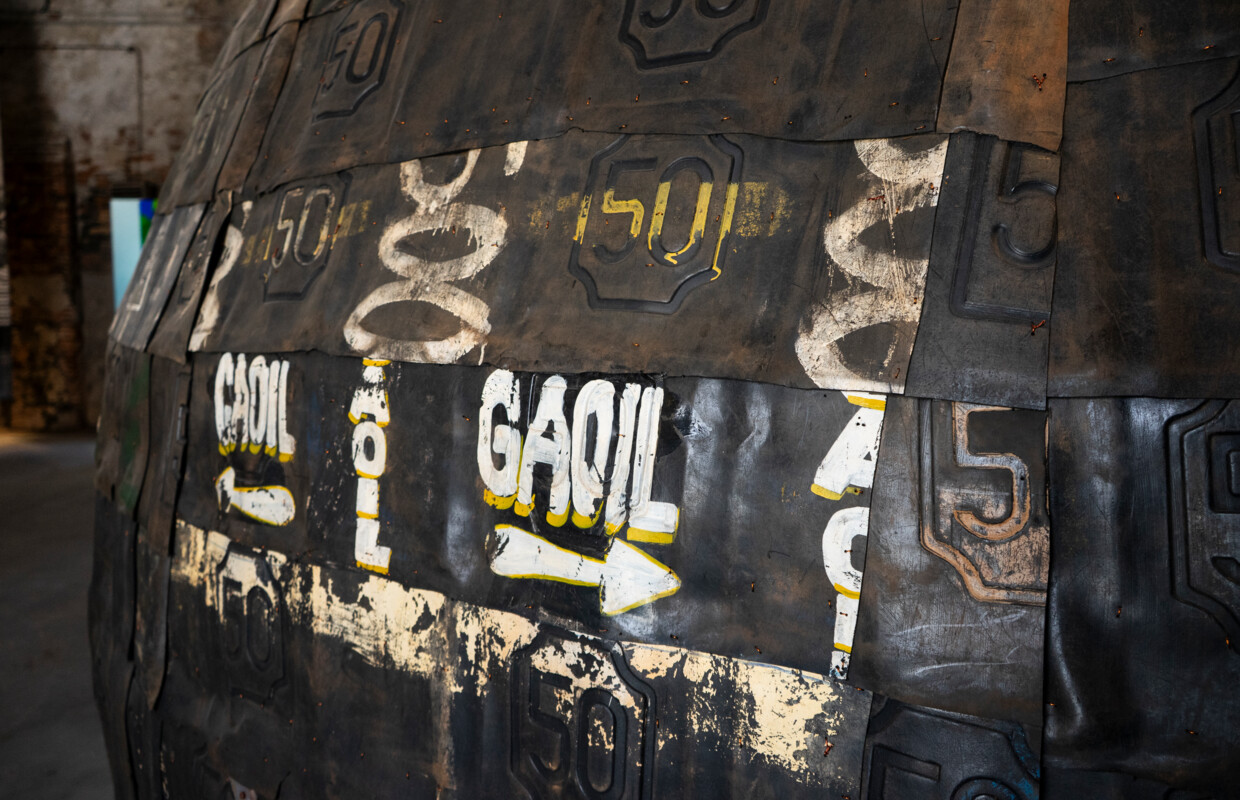

G: What does “Ashé” mean?
RH: Ashè means power, but not just that. For example, if you are Catholic, when you go to church, you pray to God asking him to give you a good husband, when you are not married, or you pray to him, because he can give you a good job, you know? Then, you get out of the church and some weeks later you get a great job or a good husband. That is what you wanted to have. So Ashè means not only power, it means also “so be it”, it is your wish, it is what I want to have in my life.
G: What do you hope visitors will experience from your work at the Arsenale?
When you enter my piece you need to greet everybody, no matter the place you are from. That's why the door is not high, it is just a small door, thus everybody needs to bow to enter in the installation. This way we are greeting all of our dead people who are there, in the earth, and when you enter inside, everybody is watching you, because inside of it you have about 540 jerrycans who look at you.
And you smell a particular perfume from a plant you can find in Africa, it is a particular kind of basil, not the same you eat in Italy with spaghetti or pizza (laughs)! You smell that perfume that is very special.
Then there is a song. It is a panegyric for many people (the panegyric is a song that talks about our story), it talks about ancestors, it talks about the place where we come from. Because the themes of the pavilion, Everything Precious is Fragile, are voodoo, spirituality, amazons and slavery, we put all of these things together.
When you enter inside, you can see a lot of things which belong to our culture and talk about spirituality, the colors of the jerrycans, and also when you greet everybody, as if you are entering a church. It is a way to pay respect to where we are and people who are there.
The panegyric is a song for the queen Abomey who was the first woman who brought the amazons army in Benin, that’s why there’s this song in the pavilion.
So, when you are inside of the installation, you smell the basilicum, you hear the song, you can see all the slaves, and all of them look at you, they have power, and you are there, inside, alone, to get the power, if you need something you can ask. That’s what I want.
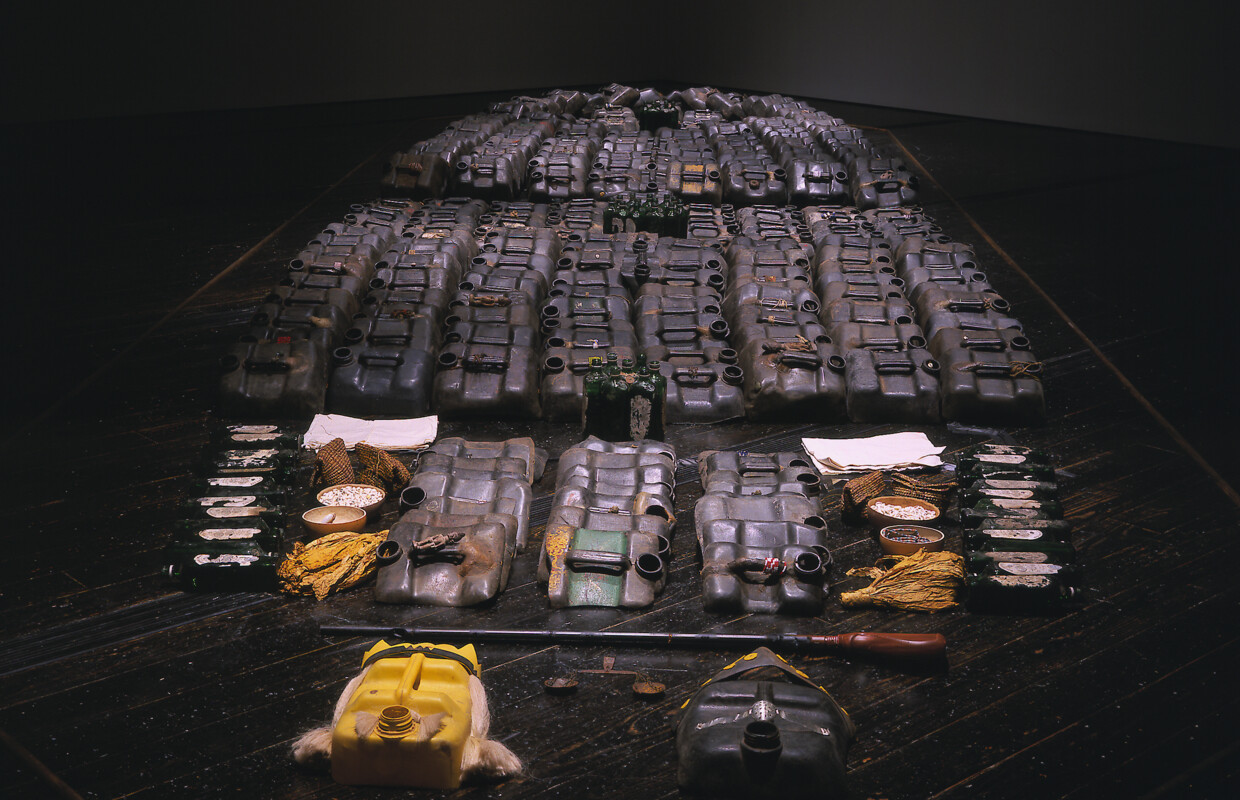
G: Your most famous works are "La bouche du roi" and the masks series, they were very highly received by the public. Which of your artworks do you yourself value the most?
RH: It's like choosing between my three kids. I don’t think it is possible. They belong all to the same heart, everyone comes from my heart. And for me, it's not possible to say that one piece is the best work I made. I am never satisfied enough. Because when I create a piece of art, I could always make it better. And when I finish to work on it, that means, I say “let's stop”. There could be a performance that lasts one hour and then people would think the exhibition is finished. But it isn’t, it is a process.
If you ask me “la Bouche du roi” is it finished?” I will say it's finished, but inside me it’s never finished.
I need to stop at a certain point because if I didn’t stop, I would destroy the pieces. Because I'm the only one who knows where the pieces start and when the pieces end. And if I continue, I will destroy the pieces completely, it will become something very abstract, so you would see only a few things. For me, it would be “la Bouche du roi”, but nobody else could understand it, nobody could read anything. I would be the only guy who knows exactly what I made. It would be very egocentric, I don't want this. That's why at a certain point I stop and I say ”okay, it's good to show”.
G: Are there any art forms or styles you haven't explored yet but are interested in trying?
RH: That's a very difficult question! It's not me who decides what to explore, it’s the piece of art that decides what I need to use. Because sometimes I make photography, you know, and everybody likes my pictures. They call me for that. In September, we had a show at the ICP (International Center of Photography in New York). And, some other times I make music, sometimes I work with smell, sometimes I paint, but it's the pieces that decide, it's not me. The pieces say to me what I can use better to talk, to create impact on people's hearts.
And for the styles well... I hate the style. When people say “this artist has a style” or something like this, I hate that. I'm not an artist anymore. If I'm an artist, I want to use people to make my pieces of art, so we can see the piece of art is still alive. Because I have like 100 people inside my pieces But it's not just this, I’m not limited to a certain style.
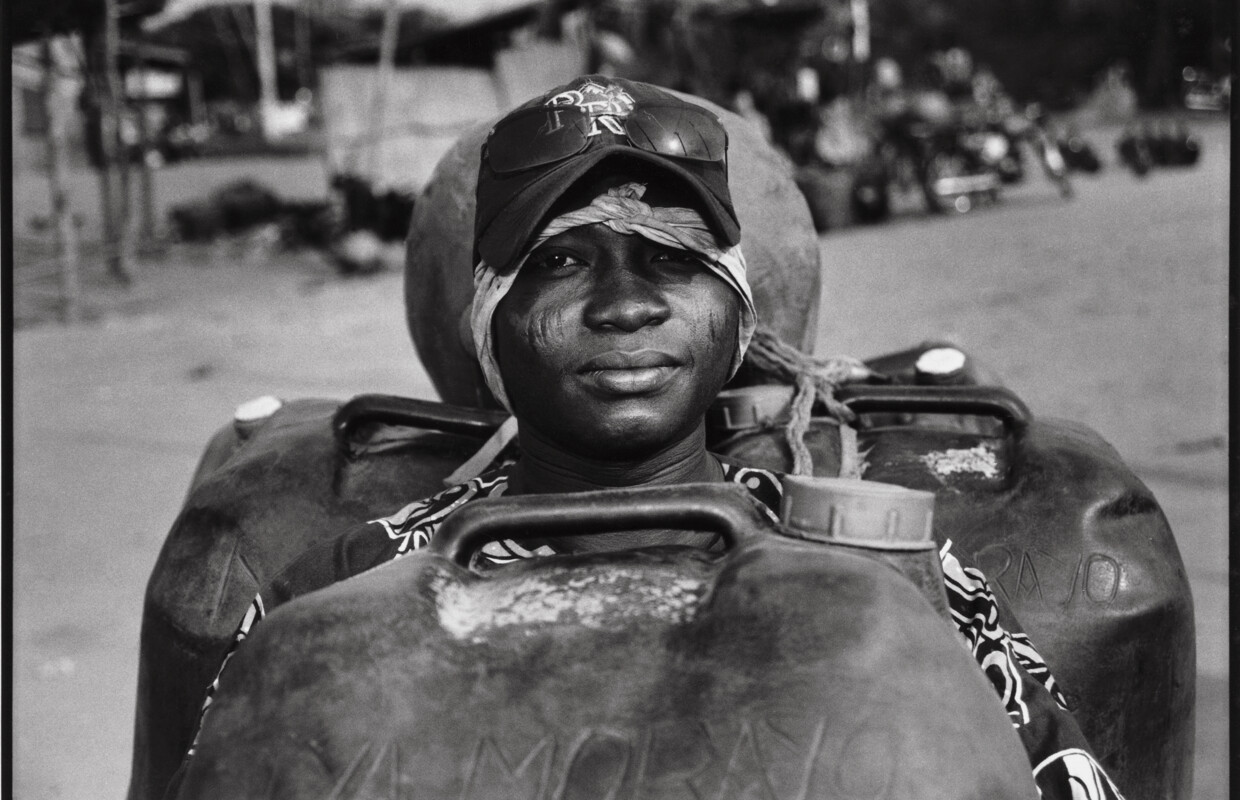
G: What advice would you give to your young self and what advice would you offer artists who have just emerged in the current art market?
RH: I would say to him that it’s very, very, very difficult to be artists… but it's possible. It's possible in one way: never think about the money you will have. Never follow money. Just follow your works, when the work becomes strong, money will follow you.
But don't think about money, because it's dangerous, you know.
When you are not free in your head and you think “Argh! Romuald Hazoumè is a big artist….” - some people say that I am a big artist, I think all the big artists are dead, you know, I'm just an artist trying to survive, trying to make a good job. - ”…he's selling many pieces for many many many thousand of dollars, I want to sell my pieces at the same price…” or something like that, you have lost.
You have lost because Romuald Hazoumè has been working for 40 years, making several exhibitions in big collections and museums.
The most important thing is your work, how it becomes strong. That doesn't mean to produce art like industries,
you don’t have to make 100 paintings in a month, no, you can make only one in a month but one very strong, where you have something to say. Do not play as an artist, it is not a game, it's life.
Share the post:





